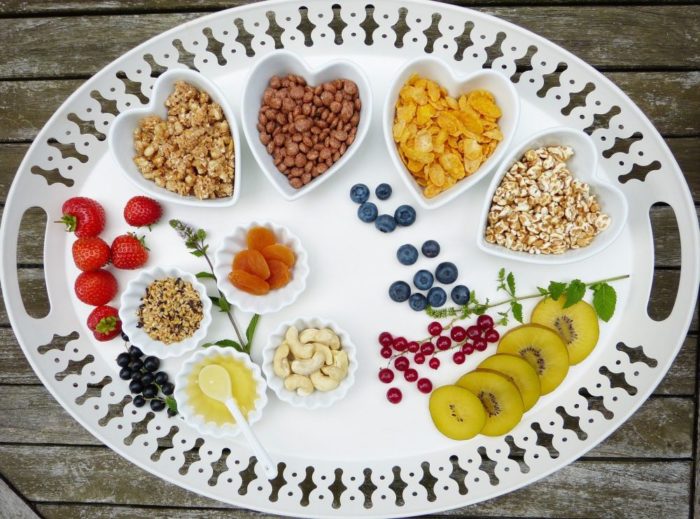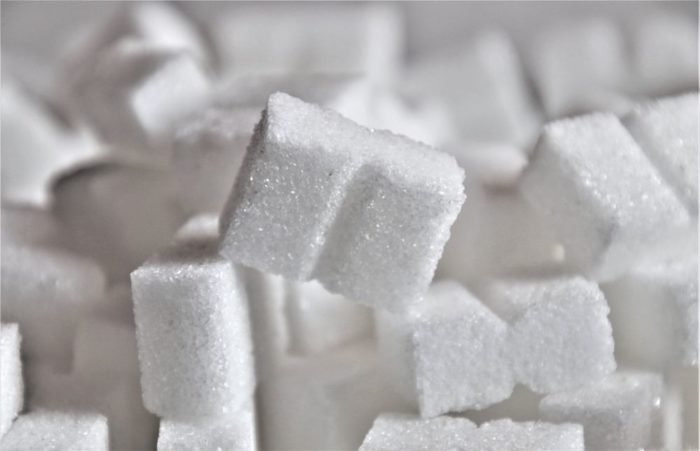Sugar is one of the main ingredients that you need to remove from the diet after being diagnosed with a fatty liver. And today we will talk about it exactly: how much sugar is allowed to consume daily if you have liver steatosis.
In fact, it would be right to ask “how many carbohydrates can we consume daily if we have fatty liver?” The sugar itself should always be zero or the closest to zero, being one of the most harmful ingredients when you have problems with the liver.
IMPORTANT: This article does not take into account the special requirements of these suffering and diabetes. If, in addition to the liver steatosis, suffer from diabetes, the situation can change. Talk to your doctor if you are in this situation.
With these things in mind, we must mention something so important. Sugar is extremely harmful when suffering from fatty liver, despite the name of the disease.
Even if you would be tempted to believe that you have to be careful of fatty foods, in reality the desserts can be so bad or perhaps even worse than fats.
Of course, in a fatty liver diet we will have to reduce the consumption of unhealthy fats (saturated fats), but at the same time we will have to be extremely attentive to how sugar or carbohydrates we consume.
And exactly that we will talk about it today:
How much sugar you can consume one day if you have a fatty liver
Firstly, I would like to speak quickly about the difference between sugar and carbohydrates. Sugar is a simple carbohydrate, while many other types of foods enter the category of carbohydrates. These are necessary for the correct functioning of the human body.
Simple carbohydrates against complex carbohydrates


Simple carbohydrates, however (such as sugar and all carbohydrates transformed such as fructose, glucose) are quickly absorbed by the body, being associated with a series of health problems, from weight gain to metabolic problems, including fat liver.
The complex carbohydrates are healthier sugars, which are naturally found in fruit, vegetables and other whole and natural foods. They absorb more slowly and arrive at the “package” with fibers and other healthy minerals, being preferable to simple carbohydrates that do not bring any benefit.
Basically, carbohydrates are those who give energy to the human body: both the simple and complex ones. But the simple ones, because they are absorbed faster, create an imbalance in our body, being quickly transformed into fat deposits because the body simply cannot consume them so quickly.
Complex carbohydrates are absorbed more slowly, providing energy for a longer time and therefore healthier. These are the carbohydrates that we must consume when we suffer from fatty liver, but also in moderation.
In short and simple carbohydrates (such as sugar), they are mainly developed in the liver and quickly transform into fats, which will be deposited inside or on the already sick liver. That’s why they should be completely eliminated from the diet and replace with complex carbohydrates, which are not so harmful, on the contrary.
Be careful, though! Even complex carbohydrates, consumed in excess, all become fat and, finally, as unhealthy. So the main thing to do is to consume them in moderation.
What is the carbohydrate limit what can we consume every day?
Looking at the doctors’ recommendations, we see that the American Heart Association recommends the following maximum values when it comes to adding sugar:
- For men, no more than 150 calories (equivalent of 36 grams of sugar)
- For women, no more than 100 calories (equivalent to 25 grams of sugar)
In other words, a dose of juice (330 ml) can have about 30 grams of added sugar, therefore almost the entire daily portion.
But here we have to consider a very important thing: the above advice is for people in perfect health.
When you already have a disease, things change. And when it comes to liver steatosis, where the sugar is more harmful, we must take care of the utmost care.


The truth is that added sugar is simply useless: empty calories, which do not benefit from it. Of course, it has a good flavor and makes the food more delicious, but from a nutritional point of view, the sugar is empty calories and it is not necessary in a healthy diet.
As long as we receive enough carbohydrates from natural sources (fruit, vegetables, whole grains), we no longer need. The United Kingdom NHS, for example, recommends that two quarters of daily diet are represented by fruit, vegetables and cereals (without added sugar). These values would be sufficient for daily carbohydrate requirements.
Other names for sugar (to stay away)
Added sugar in various transformed foods is supplied with various names. Below I will list the most common, to know how to stay away from the foods that contain them:
– sugar
– glucose
– fructose
– starch
-The syrup-glucose-futtosio
– corn syrup
– beetroot, coconut, sugar cane
– Molas
– Distrose
– maltodextrin
There are many other names used to report the presence of added sugar in food, but the above are the most common.
A trick that I use, in the event that it is not clear to me how work is, is to look at the nutritional information of the product I want to buy. There we will always have a category called “carbohydrates”, followed by “from which sugars”. The latter value must be as close as possible to zero.
Our main purpose is to reduce the consumption of added sugars as much as possible. Ideally, white sugar should be completely eliminated from the diet (therefore without sugar in coffee or tea, without sugar in cakes or food).
If this is impossible, sugar should be replaced with healthier alternatives (honey, maple syrup) but also used in much smaller quantities than before being diagnosed. For example, honey has 80% sugar, so it is not a huge difference between a teaspoon of honey and a sugar …
From personal experience, I can say that I have reduced the consumption of added sugar (in all its forms) with probably 90%. In my case it was sufficient to get rid of the fat liver, so it would probably be enough for others.
Do we consider the “added sugars” fruits?


Although many people, even in the medical field, say that the fruits should no longer be consumed after receiving the diagnosis of fatty liver, precisely because of the high carbohydrate content, do not agree with this approach. And fortunately, most doctors support my point of view.
The fruits really have a high carbohydrate content, but they are those complex carbohydrates that we have talked about and that can be considered healthy.
In addition to the sugar itself, the fruits contain many other vitamins and minerals, as well as fiber. Therefore, carbohydrates are absorbed more slowly and do not immediately turn into fat. In addition, people consume fruit for decades, so our bodies are more common with these types of sugars.
The fruits are really recommended by the vast majority of doctors when it comes to a healthy lifestyle to get rid of the fat liver.
And I agree, I consumed large quantities of fruit after I was diagnosed and they didn’t hurt me. So we do not insert them in the list of prohibited ingredients.
Of course, now it does not mean that every day we can eat two kilograms of bananas or other fruits. Moderation must be the key word in our diet. Fruit consumption with lower sugar consumption is also preferable.
For example, I eat fruit in general as a snack (between breakfast and lunch, then between lunch and dinner).
I had days when we ate two bananas – which are considered very sweet, but usually alternate with apples, oranges, peaches, plums … I ate all types of fruit without problems. Only no excess!
An important thing here is that dried fruits should be removed from our diet. They have a high sugar content because they are generally soaked in syrup before drying. Read the label, at least, to know exactly what you eat.
Conclusion
Carbohydrates are necessary for the normal functioning of our body, therefore a complete elimination is not recommended (as is done with the ketogenic diet, for example). However, they should be consumed in moderation, by natural sources: fruit, vegetables and whole grains.
Added sugar must be completely removed from the diet or at least reduced to the maximum if we suffer from liver steatosis. Although, as we have seen, the AHA allows the consumption of 30 grams of added sugar per day, it is recommended for people who already have no health problems.
For those who suffer from fatty liver – as well as any other disease, the amount of added sugar consumed daily should be the closest to zero. We combine it with the complete elimination of alcohol and we will be able to say, as soon as possible, “goodbye, fatty liver!”
latest posts published

Do difficult things!

Does yoga start alone, at home, good or bad idea?

Connected watches: take off!

How to alleviate and avoid them

How to lose your thighs? Exercises, suggestions and nutrition

Remote to sport in winter, the light track!

Solutions, exercises and suggestions to help you!

Substitutes of meals: real slimming allies?

Dry January: Return of experience!


